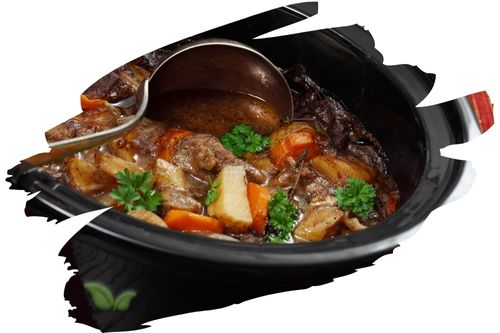
Introduction
Herbs are the secret weapons of chefs and home cooks alike, elevating dishes with their aromatic and flavorful qualities. Thyme and Marjoram are two such herbs that bring a delightful aroma and taste to a wide range of culinary creations. Let's uncover the flavors of these herbs and their role in the kitchen.
Thyme vs. Marjoram
Thyme: The Earthy Classic
Thyme, scientifically known as Thymus vulgaris, is an herb renowned for its earthy, slightly minty flavor and strong aromatic qualities. Its tiny leaves are packed with flavor and fragrance, making it a staple in many cuisines. Here's what sets Thyme apart:
- Flavor Profile: Earthy, slightly minty, with a hint of lemon and warmth.
- Culinary Uses: Widely used in Mediterranean, French, and Italian cuisines, Thyme is a versatile herb that enhances the flavor of soups, stews, roasted meats, and vegetables.
Thyme's robust flavor and aromatic notes make it a favorite for adding depth and complexity to a wide range of savory dishes.
Marjoram: The Mild Sweetness
Marjoram, scientifically known as Origanum majorana, is a close relative of oregano and has a milder, sweeter flavor compared to Thyme. It offers a delicate herbal fragrance and a touch of floral sweetness. Here's a brief overview of Marjoram:
- Flavor Profile: Mildly sweet, herbal, with floral undertones.
- Culinary Uses: Commonly used in Mediterranean and Middle Eastern cuisines, Marjoram is an excellent complement to dishes like roasted chicken, grilled vegetables, and tomato-based sauces.
Marjoram's gentle sweetness and herbal notes make it an ideal herb for adding a subtle layer of flavor to a variety of dishes.
Cooking with Thyme and Marjoram
Now that we've distinguished between Thyme and Marjoram, let's explore how to use them to infuse your dishes with their unique essence:
Thyme: Robust Aroma
1. Roasted Excellence
Sprinkle fresh or dried Thyme leaves over roasted meats, such as chicken, lamb, or pork, to enhance their flavor and aroma.
2. Hearty Soups and Stews
Add Thyme to soups and stews for a savory depth that complements the hearty ingredients and elevates the overall taste.
3. Herbaceous Seasoning
Combine Thyme with other herbs like rosemary and sage to create a flavorful herb seasoning blend for roasted potatoes or vegetables.
Marjoram: Subtle Sweetness
1. Poultry Perfection
Use Marjoram to season poultry dishes, such as roasted chicken or turkey, to impart a mild and sweet herbal flavor.
2. Tomato-Based Delights
Enhance tomato-based sauces and dishes like pasta and pizza with a touch of Marjoram for a gentle herbal infusion.
3. Grilled Goodness
Sprinkle Marjoram over grilled vegetables or seafood to introduce a subtle sweetness that pairs well with the smoky char.
FAQs
Can I substitute Thyme for Marjoram or vice versa?
While both Thyme and Marjoram belong to the same family of herbs, they have distinct flavors. Substituting one for the other may alter the taste of your dish, so it's essential to consider the specific flavor profile you desire.
Are there any health benefits associated with Thyme and Marjoram?
This article does not cover the potential health benefits of Thyme and Marjoram.
Can I grow Thyme and Marjoram at home?
Yes, both Thyme and Marjoram can be grown at home in gardens or pots, provided they receive adequate sunlight and well-drained soil.
What are some famous dishes that feature Thyme and Marjoram?
Thyme is often used in classic French dishes like coq au vin and bouillabaisse, while Marjoram complements Mediterranean dishes like pizza and roasted vegetables.
Can I use Thyme and Marjoram together in the same dish?
Yes, Thyme and Marjoram can be used together to create a harmonious blend of earthy and sweet flavors in various recipes.
How can I store fresh Thyme and Marjoram for extended freshness?
Store fresh Thyme and Marjoram by wrapping them in a damp paper towel and placing them in a plastic bag in the refrigerator. Alternatively, you can freeze them in an airtight container.
Conclusion
Thyme and Marjoram are culinary treasures, each bringing its unique flavor to the world of cooking. Whether you choose the robust and earthy notes of Thyme or the subtle sweetness of Marjoram, these herbs have the power to elevate your dishes and tantalize your taste buds.
Alert: While spices can have many beneficial properties for health, using them for medical purposes should be done under the guidance and supervision of a healthcare professional or specialist. Some spices may interact with medications or cause adverse reactions in certain individuals, and it is important to use them safely and appropriately. If you are considering using spices for a medical condition, it is important to consult with a healthcare professional before doing so.




















































